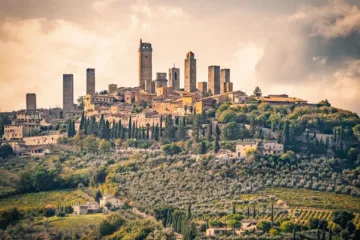
There are many certifications, closely or indirectly linked to an environmental approach, that are applicable to French vineyards. Given their number, a summary presentation of each of the 24 options identified is provided here.
The difference between certifications and labels
It should be noted that there are two terms often used: certifications and labels. These two terms have legal value, unlike some terms often used (‘Vins Responsables’, ‘Eco-Friendly’…) which have none.
Originally, the term certification referred to the ‘certifying’ process, while the term label referred to the graphic element aimed at transmitting this information to the consumer. Today, this distinction no longer applies because most actors use these terms interchangeably.
Selection criteria
In terms of selection criteria, French wineries can base their choice on a logic linked to the nature of the body managing the certification: private (Biodyvin) or an emanation from the public authorities (label AB).
Another selection criterion may be linked to the spectrum covered by the certification. A restricted spectrum can, for example, be the ‘Zero Résidu de Pesticides’ (only bottle content). On the other hand, an approach on an entire vineyard (AB or Demeter) or a global approach called ‘RSE’ including social, societal, and economic (Terra Vitis, etc.).
Another possibility is to turn to certifications aimed at testifying to a given philosophy of the winegrower’s profession (e.g., AB, Demeter, Nature, etc.).

About the return on investment of certifications and labels
Of all the selection criteria, the most important is probably the one offering the best economic return for the producer. Indeed, a producer does not need a label to practice Biodynamic (or Nature…) winemaking. The main justification for certification, therefore, lies in the profitability offered by this or that certification. Profitability is determined by market demand, which in turn is determined by the recognition of the certification by the target consumer (a background trend or fad).
Today, we are witnessing a real dynamic for AB labeled wines. Other certifications can also act as a real niche market for specialized amateurs (‘Natural’ wines).
The need to be cost effective
All these certifications can, theoretically, be added to each other. However, producers generally avoid ‘collecting’ certifications because their marginal utility is decreasing and would only create additional costs, administrative overload, and consumer confusion.

Some interesting combinations
However, some labels (Demeter, Nature, etc.) require the prior obtaining of an Organic Agriculture label in order to receive the final label.
In addition, certain approaches, such as the EMS, propose to combine certification aimed at enhancing the activity of the vineyard (ISO 14001 – Afnor) with HVE certification.
In order to analyze the different options, I propose a mapping of my own allowing an analytical and synthetic vision.
Finally, some certifications are intended to serve as an introduction (HVE1) or a springboard (3D) towards a more demanding or broader certification.

Follow me on my Social Media
Wine is a gourmet treasure, do not abuse alcohol!
None of this content has been sponsored
I did not receive any gifts or free samples that could be related to this article


